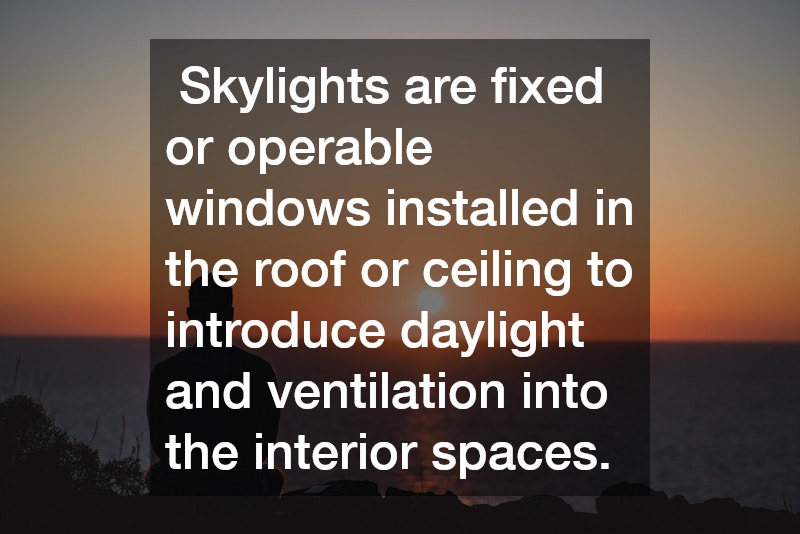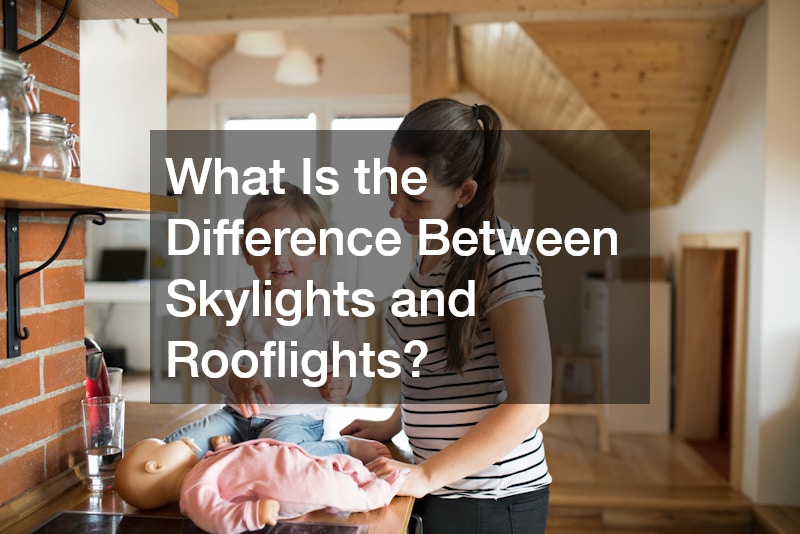In modern architecture, natural lighting plays a significant role in enhancing the ambiance and energy efficiency of spaces. Homeowners and builders often opt for methods that introduce more natural light, such as installing skylights and rooflights. While these terms are often used interchangeably, there are distinct differences that can influence your decision when you decide to invest in more daylight.
Understanding these differences can guide you to make the right choice for your home’s design, functionality, and aesthetic appeal. It is not just about letting light in; it’s about balancing form, function, and efficiency.
This article will provide an in-depth comparison of skylights and rooflights, helping you determine which option is best for your specific needs.
Moreover, we will incorporate the keyword ” Buy Flat Skylights” to address those specifically interested in purchasing options. By the end of this article, you will be better prepared to enhance your home with natural lighting solutions that fit your personal and architectural requirements. Let’s start by exploring the fundamentals of both systems.
Defining Skylights
Skylights are fixed or operable windows installed in the roof or ceiling to introduce daylight and ventilation into the interior spaces. They are typically found in residential buildings, where adding natural light to dark rooms is desired without sacrificing privacy. Skylights can significantly reduce the need for artificial lighting, thus decreasing energy consumption and enhancing the overall mood of a room.
The design of skylights varies widely, ranging from flat to dome-shaped options, each serving different aesthetic and functional purposes. Some skylights come with added features, such as remote-controlled shades or sensors that close the skylight during rain. Installing skylights can also improve the value of a home, as they contribute to a modern, visually appealing environment.
When considering to “Buy Flat Skylights,” it is important to assess not only their visual impact but also their practicality. Flat skylights offer a sleek, contemporary look and are known for their energy efficiency and durability. As you explore purchasing options, factor in the installation processes and materials for optimal results.
Exploring Rooflights
Rooflights, on the other hand, are generally installed on flat roofs and have a broader commercial application than skylights. They are an ideal option for large spaces requiring uniform lighting, such as warehouses or factories. Rooflights are often larger than skylights and can be easier to maintain given their placement and design.
Incorporating rooflights into a building design increases natural illumination while maintaining an unobtrusive architectural profile. They can complement the aesthetic of minimalistic and modern buildings by integrating light in a subtle yet efficient manner. The nature of rooflights being primarily flat also simplifies installation, making them a practical choice for many building projects.
Despite their similarities, it’s crucial to note that rooflights are predominantly used in commercial and industrial contexts. While some homeowners choose to install them in residential properties, they are not as common as skylights in such applications. Those looking to brighten a smaller, residential space may find skylights a more suitable option.
Comparing Installation and Maintenance
The installation of skylights can be more complex compared to rooflights due to the pitched angles and customization options involved. Many potential buyers consider installation factors especially when they are ready to “Buy Flat Skylights.” Proper installation requires expertise to ensure the ceiling’s structural integrity is maintained, and to prevent issues such as leaks.
Rooflights are relatively easier to install due to their position on flat roofs and the straightforward design, which often requires less structural alteration. This ease of installation also extends to their maintenance, with rooflights generally requiring less upkeep than their pitched counterparts. For homeowners looking to reduce maintenance demands, rooflights may offer a more appealing choice.
Over time, both skylights and rooflights may require maintenance to address issues like condensation and leaks. However, the variations in their design can influence the extent and frequency of required maintenance. When choosing between the two, consider not only the initial costs and aesthetic benefits, but also the long-term upkeep implications.
Energy Efficiency and Sustainability
With sustainability becoming a pressing concern globally, both skylights and rooflights offer energy-saving benefits by reducing the need for artificial lighting. Skylights, in particular, are known for offering natural ventilation options, which can contribute significantly to reducing heating and cooling costs during certain seasons. Devices installed can also have built-in blinds or expert insulation that further enhances their energy efficiency.
Rooflights also contribute to sustainability by maximizing natural light in large, expansive spaces, eliminating the need for multiple light fixtures. This can be particularly beneficial in commercial settings where electricity consumption is typically higher. Additionally, modern advancements in rooflight materials now include options that provide thermal insulation, balancing comfort and sustainability.
Choosing to “Buy Flat Skylights” often corresponds with a decision to prioritize energy efficiency while maintaining a minimalist design approach. Those invested in sustainable architecture will benefit from understanding how both skylights and rooflights align with environmental standards. They can improve energy efficiency and offer significant financial savings in both residential and commercial contexts.
.


